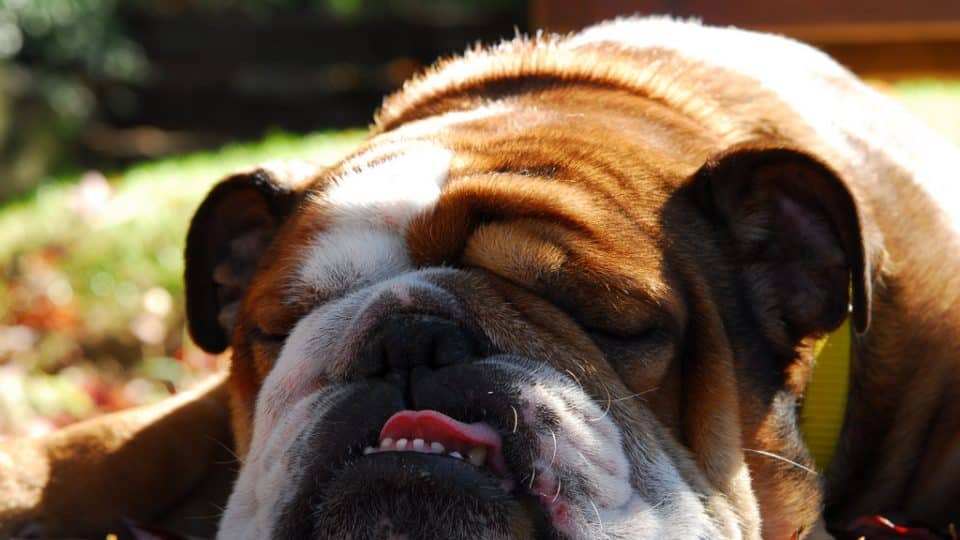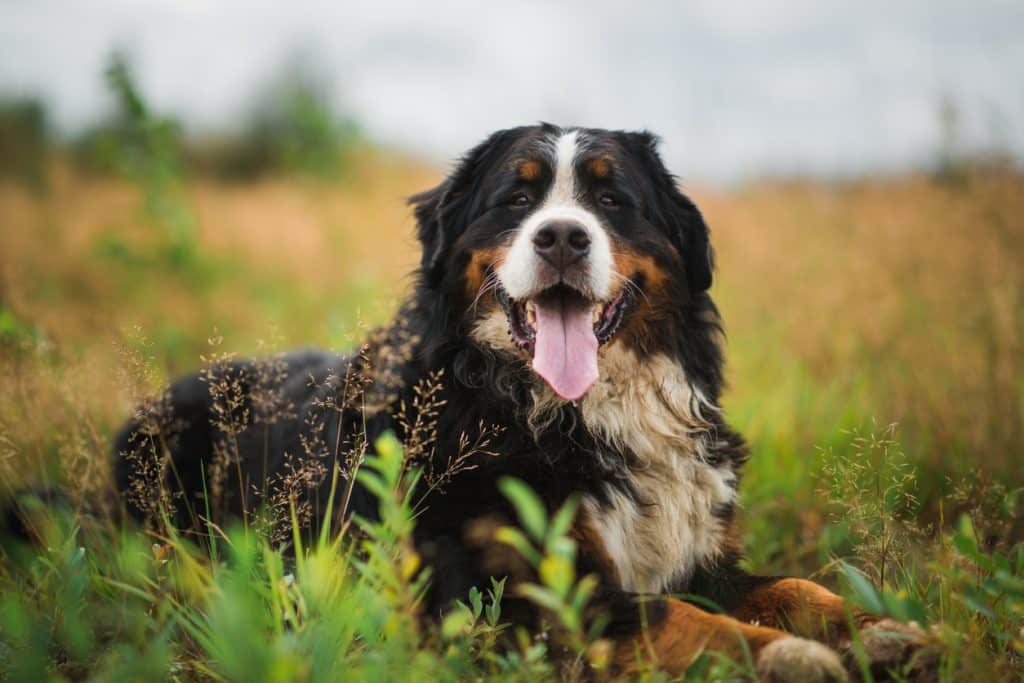All dogs need love, care, enrichment, and exercise. But some breeds naturally have lower energy levels than others, making couch time and sleeping in their ideal activity for the day.
But it’s not just exercise that comes into play when looking for low-maintenance dogs. Canine couch potatoes have plenty of other needs to be met by their pet parents, from mental enrichment to grooming. “Prospective pet owners should be prepared to invest the time and resources needed to maintain their pet’s coat, skin, and overall hygiene,” says Dr. Strong.
That means there isn’t really a best lazy dog breed. But–if you are looking for a low-maintenance dog, you may want to find dogs who enjoy shorter walks, indoor exercise, and grooming sessions.
We looked at dog breeds all around to find ones who are considered lower energy and lower maintenance than others. Read on for 19 canines who have minimal exercise needs but maximum loves.
Low Energy Toy Dog breeds
Chihuahua
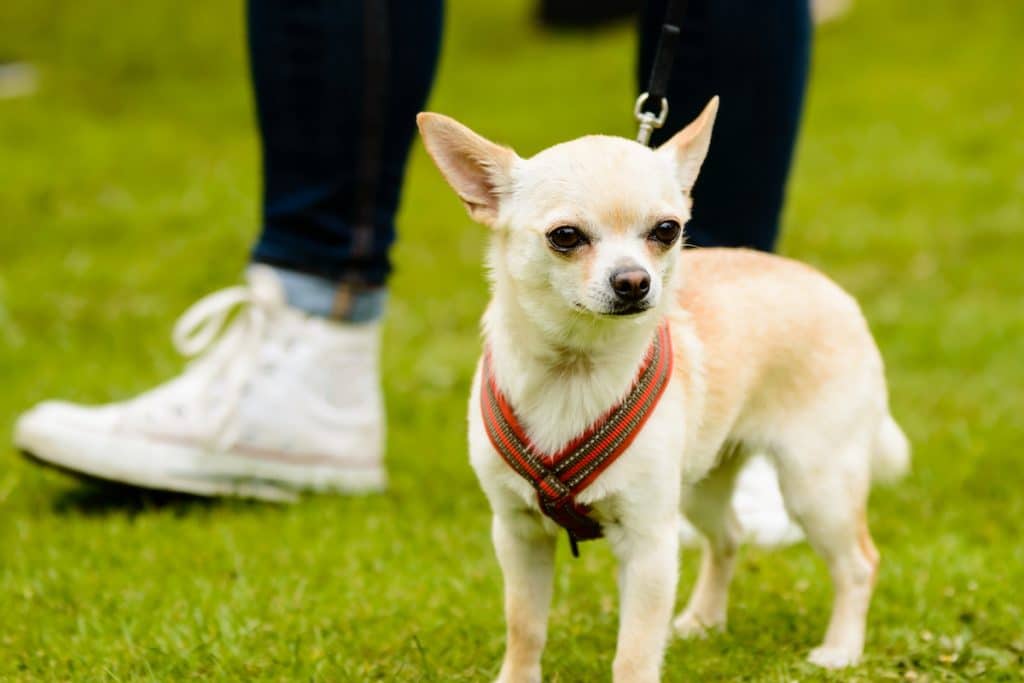
Reimphoto via iStock
These pint-sized dogs come with big personalities and sharp minds. As they’re so small, Chihuahuas are among the least active dogs but will need play, company, and enrichment on top of that to stay happy. Once their needs are met, they’ll be content to snuggle up on your lap and enjoy lazy dog life.
- Size: 12.5 to 20 centimetres tall (at the shoulder), weighing up to 2.5 kilograms
- Personality: Loving, alert, and adaptable
- Grooming needs: Weekly
- Activity: Needs up to 30 minutes a day of exercise
- Trainability ease: Average
- Barking: High tendency
Pomeranian
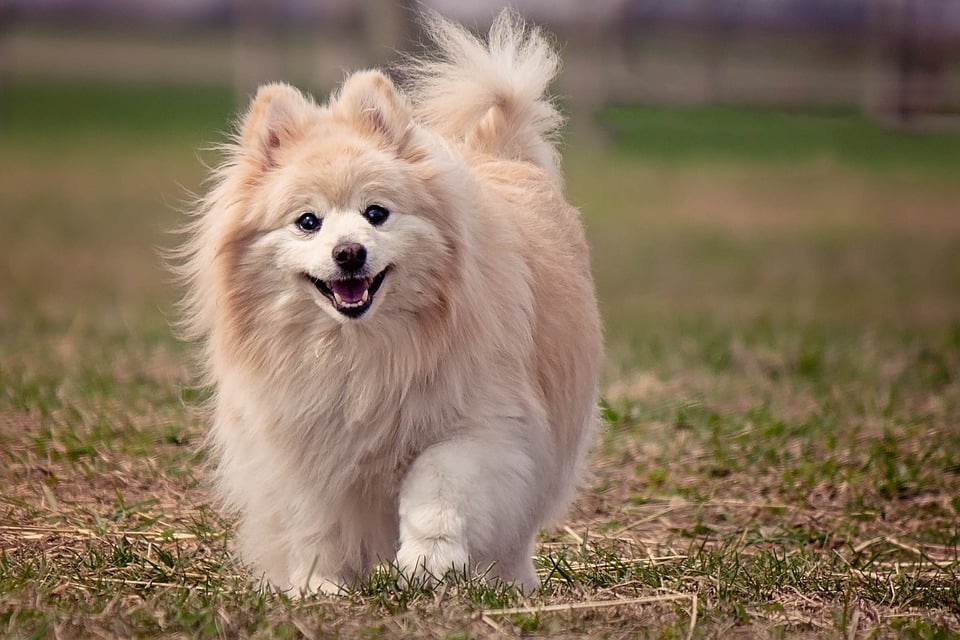
Pixabay/PurpleHorse
High-spirited and alert, the Pomeranian pays close attention to the world around them. This foxy little spitz can be on the bossy side, so obedience training is in order. Although active, indoor play and short walks can easily use up the Pomeranian’s excess energy.
- Size: 15 to 18 centimetres tall (at the shoulder), weighing 1.5 to 3 kilograms
- Personality: Affectionate, perky watchdog
- Grooming needs: More than once a week
- Activity: Needs up to 30 minutes a day of exercise
- Trainability ease: Average
- Barking: Medium to high tendency
Maltese
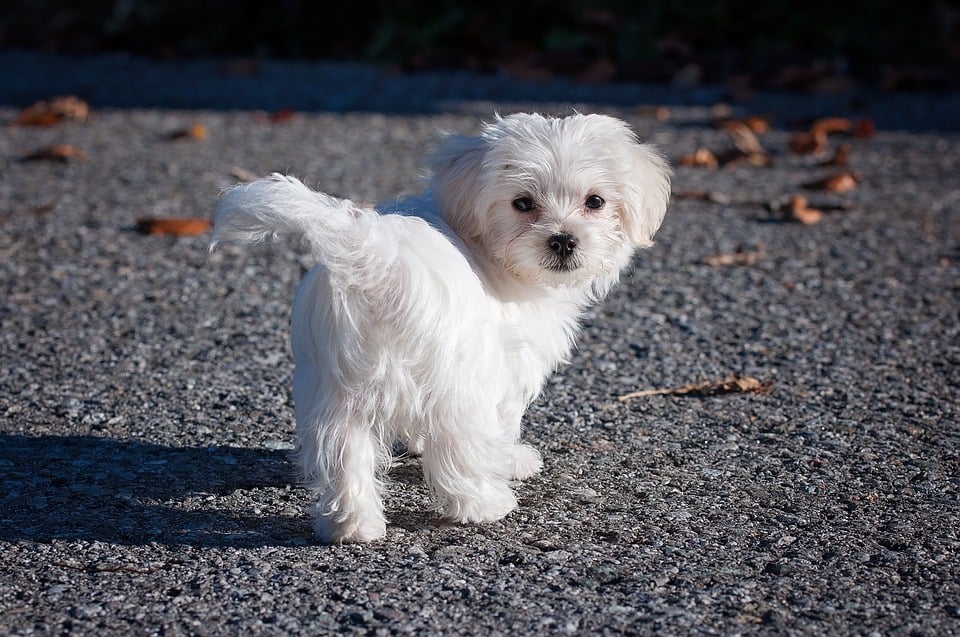
Pixabay/Pezibear
Bright and playful, this companion will relax and entertain you in equal measure. The Maltese is one of the lazy dog breeds that don’t shed, but they’ll need plenty of grooming because of this (in the show ring, they’re known for their silky, floor-length coat). And while their exercise needs may be low, this little dog can excel at agility.
- Size: 45 to 56 centimetres (at the shoulder), weighing up to three kilograms
- Personality: Affectionate, playful, and adaptable
- Grooming needs: Every day
- Activity: Needs up to 30 minutes a day
- Trainability ease: Average
- Barking: Medium tendency
Japanese chin

MementoImage via iStock
A highly-affectionate and elegant lapdog with soulful eyes, the Japanese chin is easy to train with a merry personality. These dogs are often described as a distinctly ‘feline’ breed, due to their fastidious cleaning routine, grace, and unassuming nature.
- Size: 20 to 27 centimetres tall (at the shoulder), weighing three to five kilograms
- Personality: Graceful cuddle bug
- Grooming needs: More than once a week
- Activity: Needs up to 30 minutes of exercise a day
- Trainability ease: Average
- Barking: Low tendency
Chinese Crested
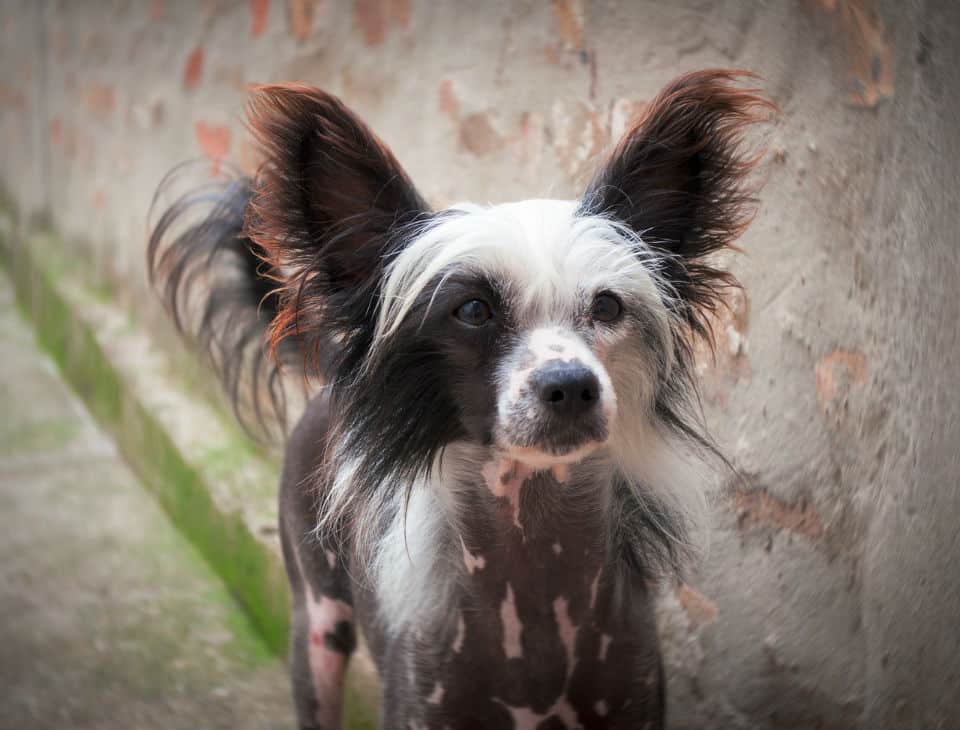
Pixabay/popovicmjeljica
The Chinese Crested is a small but smart, loving, and mostly hairless companion (though there is also a coated ‘powder puff’ variety). These are elegant, people-driven dogs who are in their element when curled up on a lap, so they’re not one of the small lazy dog breeds that can be left alone very happily. A quick walk around the neighbourhood tends to suit the Chinese Crested just fine and their lack of fur makes them low-maintenance on the grooming front, but they’re big on cuddle demands and may need clothing in cold weather.
- Size: 28 to 33 centimetres tall (at the shoulder), weighing 3.5 to 5.4 kilograms
- Personality: Lively, alert, loving and people-orientated
- Grooming needs: Weekly
- Activity: Needs up to 30 minutes of exercise a day.
- Trainability ease: Easy
- Barking: Medium tendency
Small Low Energy Dog Breeds
Brussels Griffon
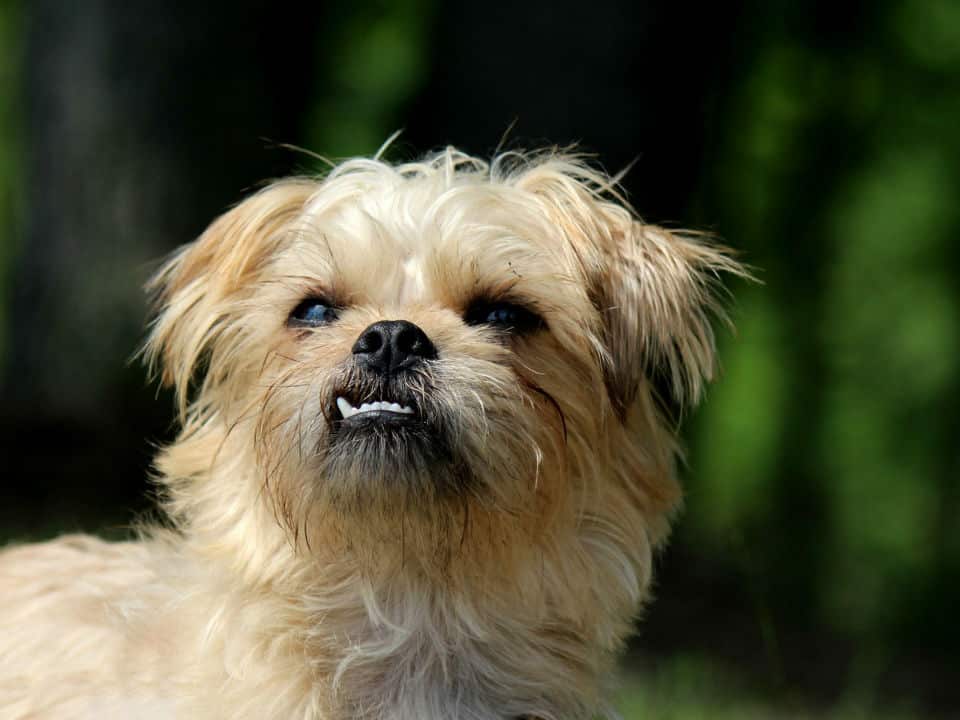
Pixabay/PublicDomainPictures
Also known as the Griffon Bruxellois, these bearded little Ewoks are sensitive snugglers with huge hearts (and even bigger attitudes). What they lack in stature, these diminutive dogs more than make up for in personality—enough for 10 ordinary dogs, according to the American Kennel Club, which describes the Brussels Griffon as a “humanlike toy of complex character”. It’s another of the low-energy dog breeds that struggle with being left alone.
- Size: 18 to 25.4 centimetres tall (at the shoulder), weighing 3.6 to 4.5 kilograms
- Personality: Alert, sociable, and sensitive
- Grooming needs: More than once a week
- Activity: Needs up to 30 minutes of exercise a day
- Trainability ease: Easy
- Barking: Medium to high tendency
Cavalier King Charles Spaniel
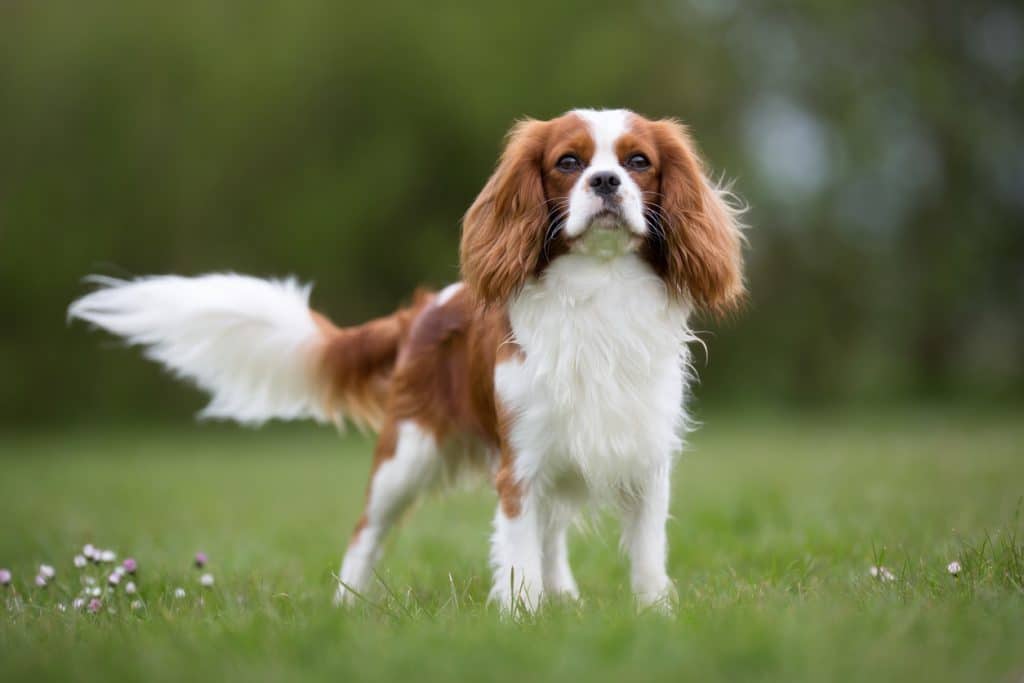
iStock/Bigandt_Photography
A good combination for lightly active families, Cavalier King Charles Spaniels have an adaptable nature that can see them fit in with the lifestyles of the humans they love. Cavs can be a little athletic, due to their hunting lineage, but they also love snuggles—and hate to be away from you for long.
- Size: 30 to 33 centimetres tall (at the shoulder), weighing six to eight kilograms
- Personality: Affectionate, sociable, and adaptable
- Grooming needs: More than once a week
- Activity: Needs up to one hour of exercise a day
- Trainability ease: Easy
- Barking: Medium tendency
Pekingese
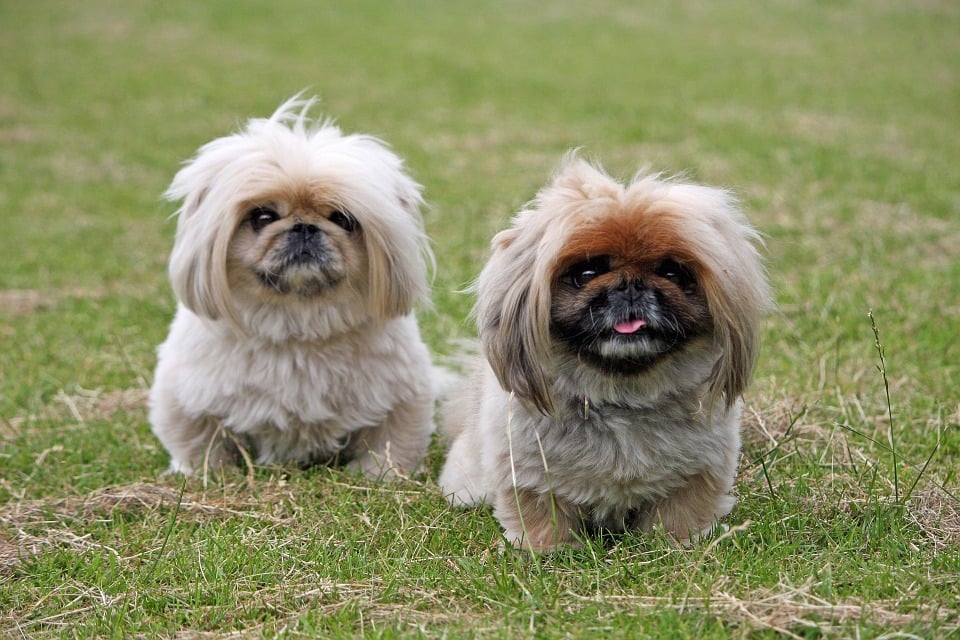
Pixabay/Kaz
A chunky little aristocratic lazy dog breed with a beautiful coat and a big attitude, the Pekingese was born to be your sweet and comical companion. Their kind nature and low energy levels make them one of the best lazy dogs for seniors who are able to keep on top of their high-maintenance mane.
- Size: 15 to 29 centimetres tall (at the shoulder), weighing up to six kilograms
- Personality: Playful, confident and loving
- Grooming needs: Every day, depending on coat length
- Activity: Needs up to 30 minutes of exercise a day
- Trainability ease: Average
- Barking: Low tendency
Tibetan Spaniel

Bigandt_Photography via iStock
These beautiful, sturdy little watchdogs are calm and playful in equal measure. They love to climb and perch on a windowsill like a cat and form a tight bond with the humans they adore.
- Size: 25 centimetres tall (at the shoulder), weighing four to six kilograms
- Personality: Curious, highly affectionate
- Grooming needs: More than once a week
- Activity: Needs up to one hour of exercise per day
- Trainability ease: Average
- Barking: Medium tendency
Havanese
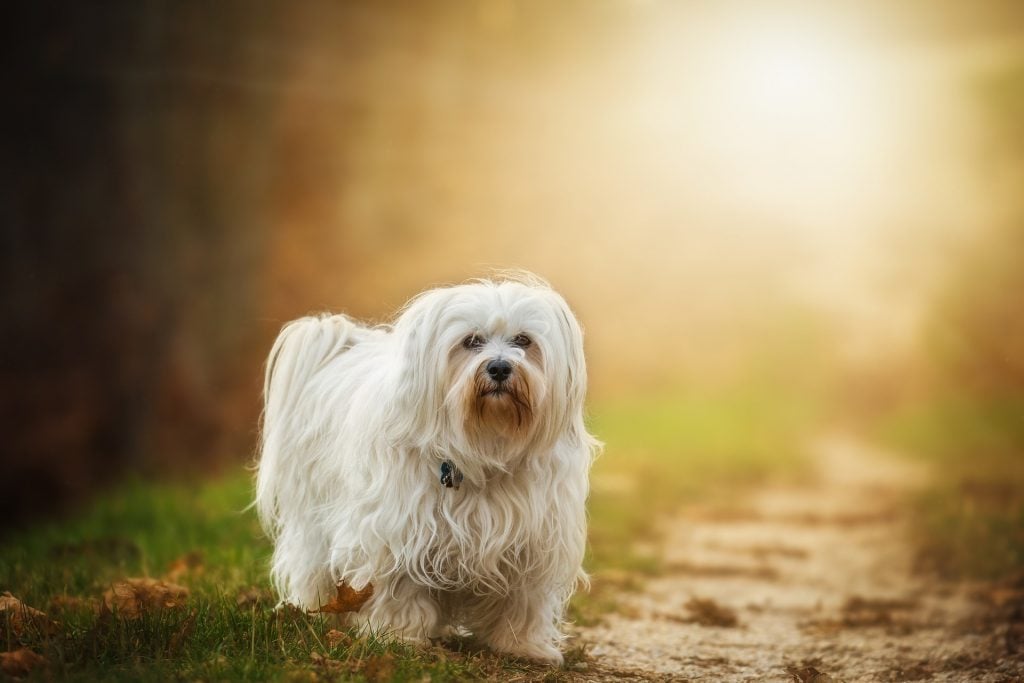
Via Pixabay/buchsammy
The happy Havanese is a sociable, natural-born clown, who loves nothing more than to entertain their families. Super smart and sturdy, these little extroverts are highly trainable, thrive in human company, and take their role as watchdogs seriously.
- Size: 22 to 29 centimetres tall (at the shoulder), weighing three to six kilograms
- Personality: Adaptable, playful, and highly loving all-round family pet
- Grooming needs: Every day (depending on coat length)
- Activity: Need up to 30 minutes of exercise a day
- Trainability ease: Easy
- Barking: Medium to high tendency
Medium Low Energy Dog Breeds
Basset Hound

Pixabay
Highly sociable and easygoing, this talented scent hound is known for its endurance and independent working dog attitude. But when their needs are met, these loveable crinkly-browed pals are more than content to fit the lazy dogs stereotype. Dr. Strong says: “Basset Hounds are content with a daily stroll and a comfortable spot to nap in, making them an excellent choice for those seeking a relaxed canine companion.”
- Size: Up to 38 centimetres tall (at the shoulder), weighing 20 to 29 kilograms
- Personality: Loyal, sociable, and sometimes stubborn
- Grooming needs: Weekly
- Activity: Need up to one hour of exercise per day
- Trainability ease: Average
- Barking: Medium to high tendency
Chow Chow
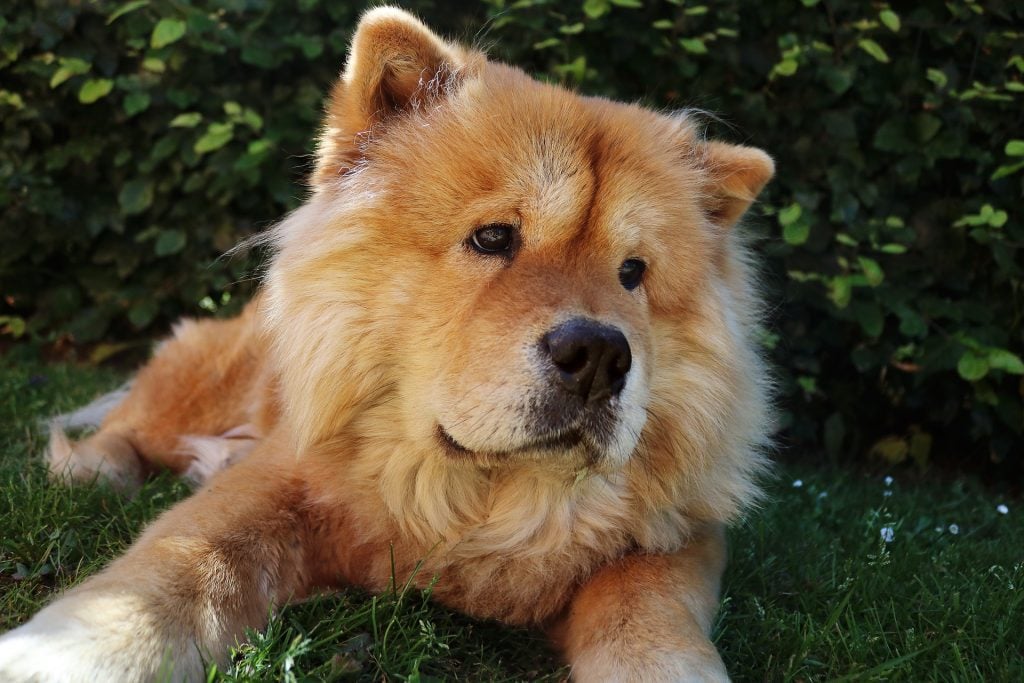
Via Pixabay/Marius-Kristensen
The majestic Chow Chow is a noble guardian, protecting his home and family. This beautiful, bearlike, companion, is one of the lowest energy dog breeds in the medium category but will require plenty of early socialisation to help combat a suspicious nature.
- Size: 43 to 50 centimetres tall (at the shoulder), weighing 20 to 31 kilograms
- Personality: Eternally loyal, dignified, and protective
- Grooming needs: Daily
- Activity: Need up to one hour of exercise a day
- Trainability ease: Average
- Barking: Low tendency
English Bulldog
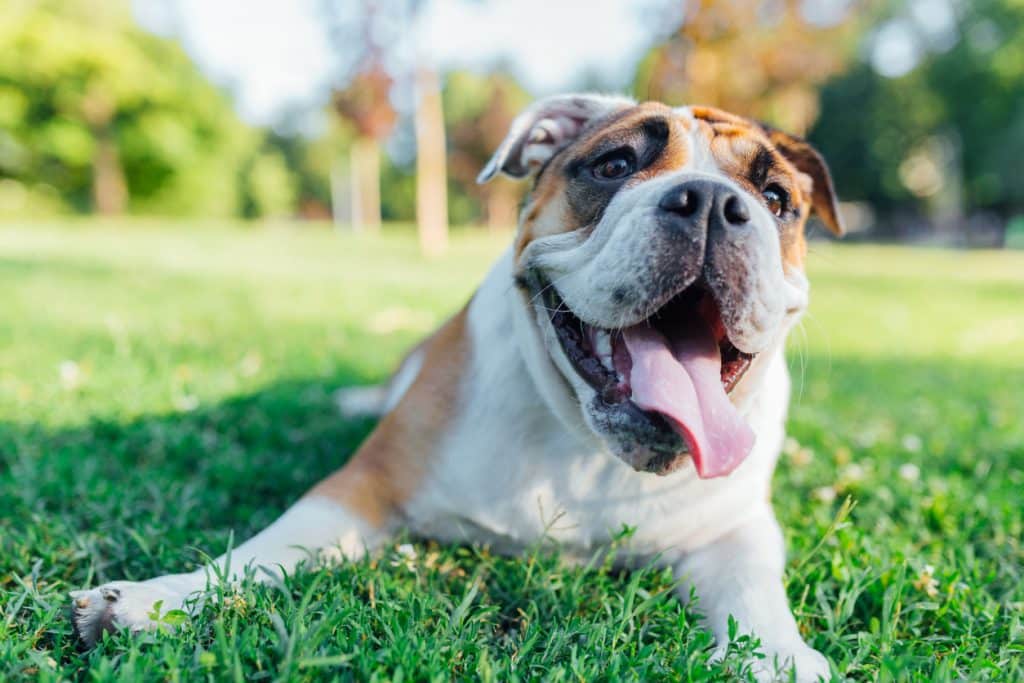
iStock/
Stubborn yet sensitive, the English bulldog is equal parts majestic and comedic. They’re low-energy but playful dogs by nature. Breathing difficulties, which are sadly common in the breed—due to them being flat-faced (brachycephalic)—may mean they need more downtime than normal.
- Size: 35.5 to 38 centimetres tall (at the shoulder), weighing up to 18 kilograms (female) and up to 22.5 kilograms (male)
- Personality: Loyal, kind, stoic, and entertaining
- Grooming needs: Weekly
- Activity: Need up to one hour of exercise per day
- Trainability ease: Easy
- Barking: Low tendency
Large Low Energy Dog Breeds
Clumber Spaniel
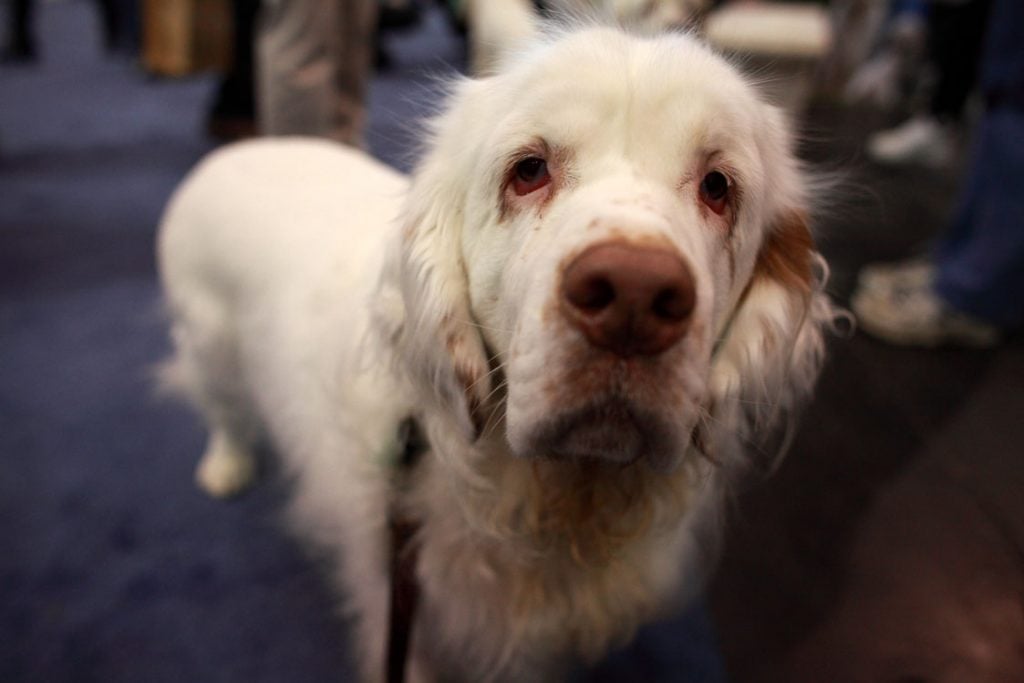
Via Flickr/ccho
An uncommon breed with true couch potato instincts, the Clumber is a heavy-built spaniel who sleeps indoors but is perfectly willing to play some fetch or run about outside. Their calm nature makes them among the best big lazy dog breeds.
- Size: 43 to 50 centimetres tall (at shoulder, depending on sex), weighing 25 to 32 kilograms (female) or 32 to 38.5 kilograms (male)
- Personality: Mellow, gentle, and eager to please
- Grooming needs: More than once a week
- Activity: Need up to one hour per day
- Trainability ease: Easy
- Barking: Low tendency
Greyhound
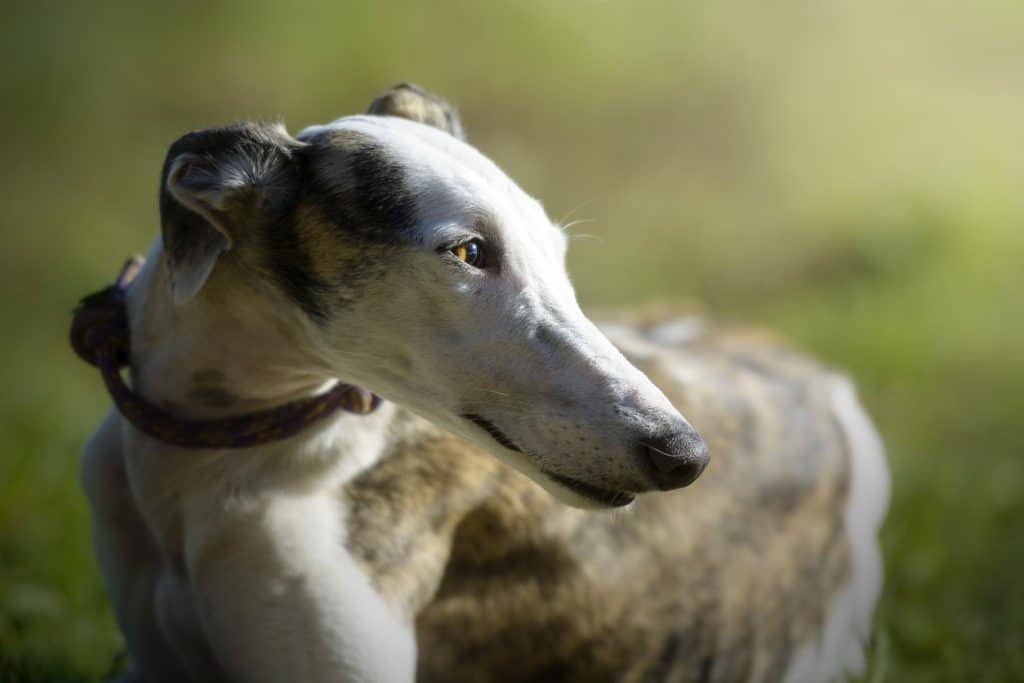
TamaraLSanchez via iStock
Despite being famous for athleticism and speed, the Greyhound only requires an occasional gallop to offset a napping regime and does best in a calm, quiet home. This arguably makes the greyhound the best low-maintenance dog and the ultimate canine couch potato. “These dogs are content with a brief daily walk and plenty of rest throughout the day,” says Dr. Strong.
Greyhounds are also one of the lazy dog breeds that can be left alone during the day for short stints if they’re accustomed to it.
- Size: 68.5 to 76 centimetres tall (at shoulder, depending on sex), weighing 27 to 29 kilograms (female) or 29 to 31.5 kilograms (male)
- Personality: Calm, sensitive and gentle
- Grooming needs: Weekly
- Activity: Need up to one hour of exercise a day
- Trainability ease: Average
- Barking: Medium tendency
Extra Large Low Energy Dog Breeds
Bernese Mountain Dog
iStock/Aleksandr Zotov
Bernese Mountain Dogs are the majestic big dog of the Swiss Alps. If they have to be active, they prefer cooler weather for sure. They’re a low-energy dog with a calm nature who loves to lean in for a good fuss and are great with children and bustling families. One of our top picks for big lazy dogs.
- Size: 58 to 70 centimetres tall (at shoulder, depending on sex), weighing 31.5 to 43 kilograms (female) or 36 to 52 kilograms (male)
- Personality: Soppy, loving, and highly intelligent all-found family dog
- Grooming needs: More than once a week
- Activity: Need up to one hour of exercise per day
- Trainability ease: Easy
- Barking: Medium tendency
Great Dane
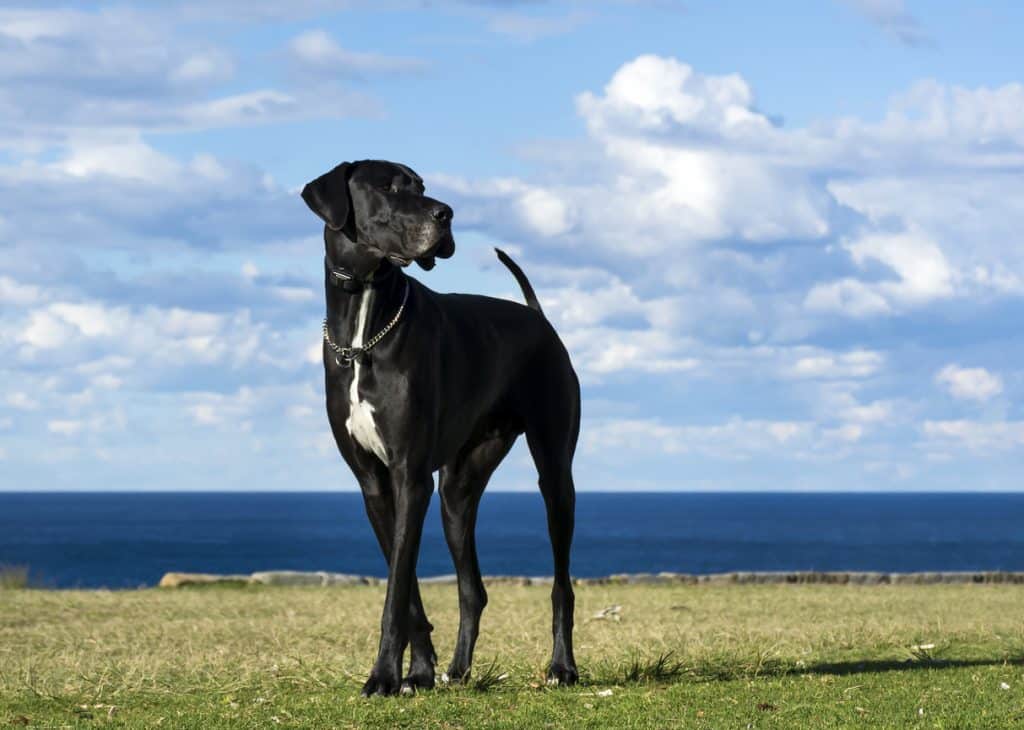
iStock/RugliG
The original ‘gentle giant’ of the dog world, the Great Dane is a large, elegant, mastiff type with hunting roots. They have among the highest energy levels of all the breeds on our list and are by no means lazy dogs. But if their exercise needs are met, they’re a calm, majestic companion who adores some sofa time (though there may not be any space left for you).
- Size: 71 to 81 centimetres tall (at shoulder, depending on sex), weighing 50 to 63.5 kilograms (female) or 63.5 to 79.5 kilograms (male)
- Personality: Friendly, patient, and loyal
- Grooming needs: Weekly
- Activity: More than two hours of exercise a day
- Trainability ease: Average
- Barking: Medium tendency
Newfoundland
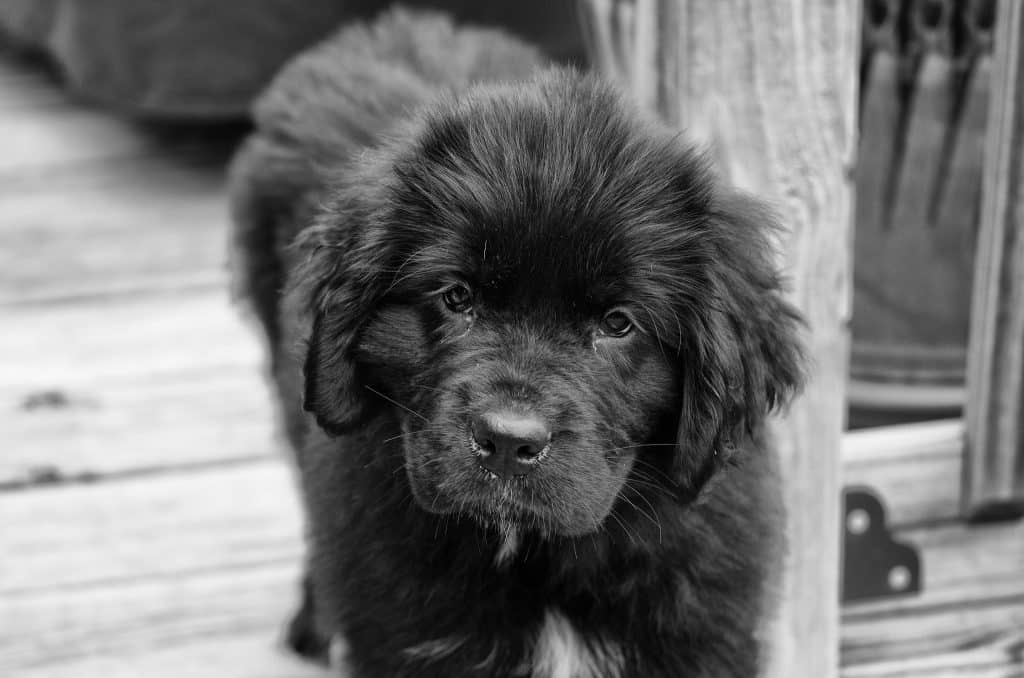
Flickr/Justin Noles
Sweet, slobbery swimmers, the Newfie is quite an active dog outside the house but they’re happy to snuggle up with their humans once they’re tired out. Great with children and families, this all-purpose heavy dog can also be trained to pull carts.
- Size: 66 to 71 centimetres tall (at shoulder, depending on sex), weighing 45 to 54.5 kilograms (female) or 60 to 68 kilograms (male)
- Personality: Devoted, affectionate and social
- Grooming needs: Daily
- Activity: Need up to one hour of exercise per day
- Trainability ease: Average
- Barking: Low tendency
Saint Bernard
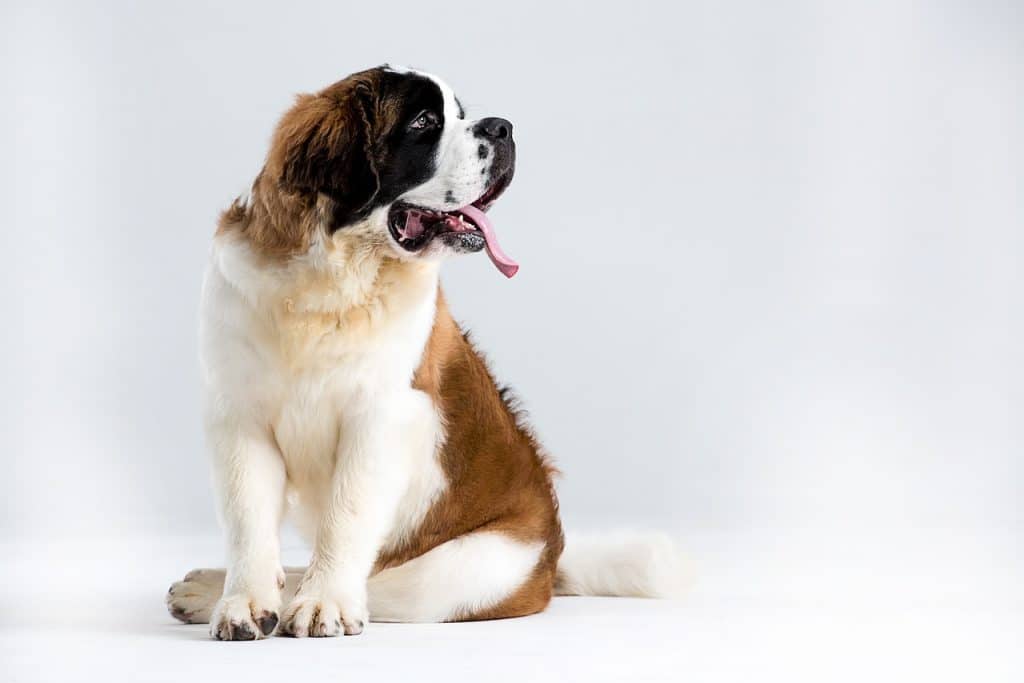
via pixabay
Saint Bernards, like the Newfoundland, love their outdoor time, though are furry, lazy dog lumps inside the home. Rambunctious in puppyhood (as depicted in the Beethoven film franchise), the adult Saint Bernard prefers to get his exercise carrying a load, hiking in the cool mountain air, or gently drowning you with drool.
- Size: 66 to 76 centimetres tall (at shoulder, depending on sex), weighing 54.5 to 63.5 kilograms (female) or 63.5 to 81.5 kilograms (male)
- Personality: Affectionate, inquisitive and family-orientated
- Grooming needs: More than once a week
- Activity: Need up to one hour of exercise a day
- Trainability ease: Average
- Barking: Low tendency
Frequently Asked Questions About Low-Maintenance Dogs
Is it better to look for a dog breed or adopt a senior rescue?
If you’re looking for a low-energy dog, a senior rescue can be a good option, according to Dr. Alex Schechter, DVM, of Burwood Veterinary in Michigan. A senior dog may spend more time sleeping than being active, due to naturally diminishing energy levels and/or illness.
Although puppies sleep a lot, no youngster is ever going to be a consistently calm or lazy dog, regardless of their breed. This means you will also have to teach your dog how to settle and be calm around people. Even though breed and genetics can predict a dog’s behaviour, dogs can also be a product of their environment.
For example, studies show that enrichment can lower stress levels and alertness and enhance relaxation, leading to a more laid-back and low-maintenance dog. A Chihuahua puppy that isn’t given the opportunity to relax or feel safe, for example, may not become chill as you expect.
Which dog breeds get confused as low maintenance but aren’t?
There are some calm or low-energy dog breeds perceived as low-maintenance but whose grooming needs, health issues or temperament make them more demanding than others. They include:
- Bichon Frise. They may seem low-maintenance due to their diminutive size but Dr. Strong says they’re often misunderstood. “Bichon Frises require regular grooming to maintain their coat’s appearance and prevent matting. Additionally, they are social dogs that thrive on human companionship and can become anxious or destructive if left alone for long periods.”
- Chow Chow. Another breed that can be “mistakenly assumed to be low-maintenance due to its independent nature and relatively low exercise requirements,” says Dr. Strong. “Chow Chows are also prone to a variety of health issues, including hip dysplasia and eye problems, and require early socialisation and training to prevent aggression towards strangers.”
- Brachycephalic breeds. This means they can face difficulties breathing and these breeds include the French Bulldogs and English Bulldogs. Sometimes, the issue is so bad that costly surgery and care is needed. As well as breathing issues, French Bulldogs and English Bulldogs are also predisposed to allergies and skin issues which need veterinary attention.
Which active breeds or dog types should I avoid?
Dr. Ellen Russell, DVM, MPH, of The Malamute Mom, says: “These breeds require lots of exercise—often multiple daily walks—as well as regular grooming and training to keep them happy and healthy”. If you are looking for puppies, these should be avoided for those looking for a laid-back canine companion. However, a senior rescue could be a good fit for you!
| Sporting | Herding | Terrier | Scent hounds |
| Labradors | German Shepherds | Jack Russells | Bloodhounds |
| Huskies | Belgian Malinois | Staffordshire Bull Terriers | Beagles |
| Doberman Pinschers | Australian Shepherds | ||
| Border Collies |
Which low-maintenance dogs are best for small apartment complexes?
According to Dr. Russell, toy or miniature breeds, as well as small to medium-sized breeds known for quietness and calm (with the right training) can be a good fit for apartment living. They include:
- Toy Poodles
- French Bulldogs
- Chihuahuas
- Pugs
- Maltese
- Shih Tzus
- Cavalier King Charles Spaniels
- Bichon Frises
- Havanese
- Brussels Griffon
But she’s quick to point out: “Dogs living in smaller living spaces might require more physical activity than those living on acreage with plenty of room to run and play.”
Nicole Ellis, a certified professional dog trainer, says not to rule out big dog breeds for apartments either. She says: “For example, Basset Hounds are by no means small dogs…but they are happy being in a smaller home by your side. While they may take up your entire apartment, Great Danes can also be amazing apartment pets. The name ‘gentle giant’ is super fitting with this breed whose calm demeanour makes them perfect for small-space living.”
Laziness Can Be a Health Concern
Dr. Russell, who cites breeds like the Cavalier King Charles Spaniel and Pekingese among the most laid-back breeds, adds: “No breed is completely ‘lazy’ or ‘low-maintenance’. Even the most laid-back breeds will still need regular walks and play sessions to remain healthy.”
Any dog, regardless of breed, needs some level of exercise. And if they don’t get enough, they may appear to be ‘lazy dogs’ because they’re depressed and lacking in mental stimulation. “Dogs who do not experience consistent exercise, outdoor activities, or mental stimulation may appear to have low energy simply because they are bored or not getting enough physical activity,” says Dr. Strong.
If the lazy stereotyping means you exercise your dog less, you may put your dog at risk of canine obesity. Research shows that the dietary and exercise habits of pet parents heavily influence the habits of their dogs. And those belonging to people with low-activity lifestyles were more likely to be overweight or obese.
Obesity can also lead to all sorts of other health complications. For example, a study into canine cognitive dysfunction (CCD), found an association between the condition and a lack of exercise. So, it’s crucial to factor in activity levels when determining how much to feed dogs to prevent weight gain.
And, even if low-energy dogs need exercise in smaller quantities, they may have heavier needs in other areas, such as mental stimulation through foraging and puzzle games or bonding time and grooming.
“Besides an exercise routine, pet owners should consider healthcare, diet and nutrition, grooming needs, attachment tendency, and training and socialization before getting a dog,” says Dr. Schechter. “Different breeds have different temperaments and energy levels, so choose a breed that fits your lifestyle and schedule.”
While their passion in life may be warming your lap and your heart, so-called lazy dog breeds can still be a big commitment—when it comes to both time and finances. But, one thing is for sure—all dogs need love and nurturing, so prospective pet parents need adequate time to devote to a canine companion before welcoming one into their lives.
